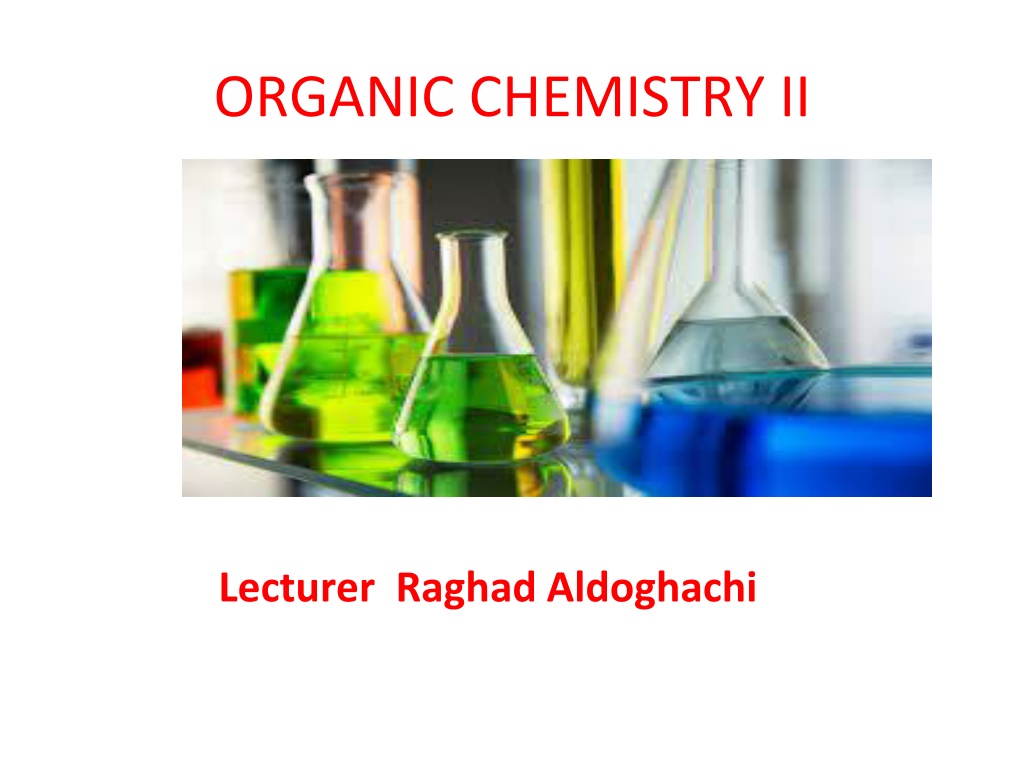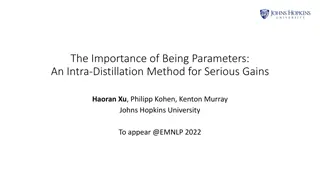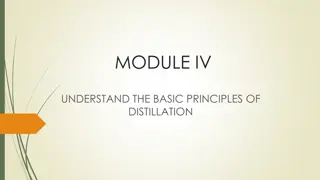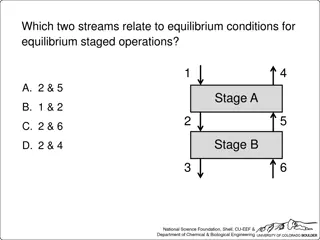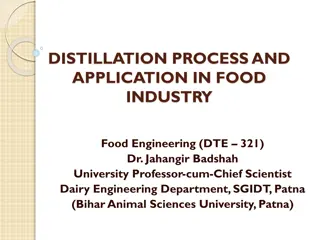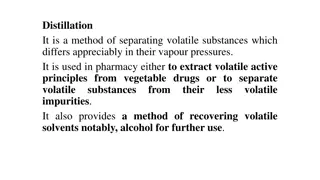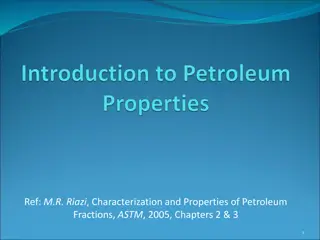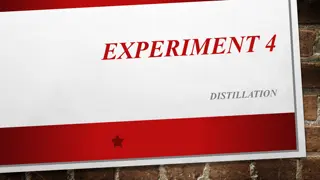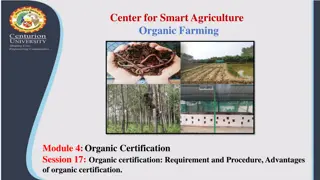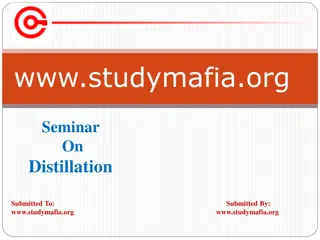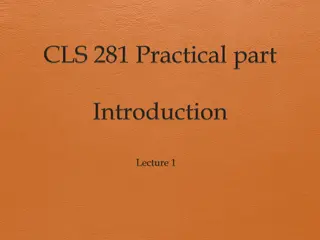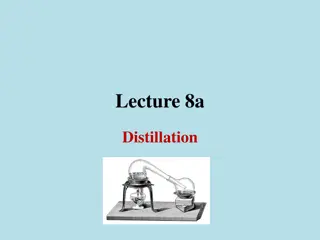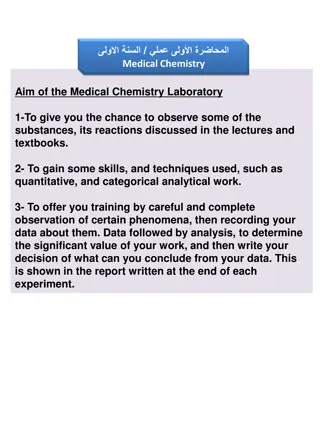Organic Chemistry II Lecturer Raghad Aldoghachi - Laboratory Safety Rules and Distillation Techniques
Explore the world of organic chemistry with Lecturer Raghad Aldoghachi through laboratory safety rules emphasizing following instructions, chemical safety, and appropriate attire. Learn about hazard symbols, organic compound studies, distillation as a separation method, purification of liquid organic matters, and various distillation techniques like simple, fractional, vacuum, and steam distillation.
Download Presentation

Please find below an Image/Link to download the presentation.
The content on the website is provided AS IS for your information and personal use only. It may not be sold, licensed, or shared on other websites without obtaining consent from the author. Download presentation by click this link. If you encounter any issues during the download, it is possible that the publisher has removed the file from their server.
E N D
Presentation Transcript
ORGANIC CHEMISTRY II Lecturer Raghad Aldoghachi
Chemistry Laboratory Safety Rules 1.Always Follow the Instructions. 2.Do Not Pipette by Mouth - Ever . 3.Read the Chemical Safety Information. A Material Safety Data Sheet (MSDS) should be available for every chemical you use in the lab. 4.Don't Taste or Sniff Chemicals 5.Dress Appropriately (include a lab coat, safety goggles and gloves).
Organic chemistry: Organic chemistry is the scientific study of the structure, properties, composition, reactions, and synthesis of organic compounds (molecules composed of carbon, hydrogen, and may contain any number of other elements like nitrogen, oxygen and halogens).
Distillation Is a method of separating mixture based on the differences in the boiling points of the components of the mixture. Distillation=Evaporations + condensation
Separation and purification of liquid organic matters This method depends on the evaporation of liquid by heating and then condensation of steam by cooling, and depending on the type of impurities in the liquid to be distilled.
Types of Distillations Techniques 1- Simple distillation 2-Fractional distillation 3-Vacuum distillation 4-Steam distillation
Simple Distillation is a procedure used when the boiling point of two liquids are significantly different from each other or to separate liquids from solids or nonvolatile compounds. Example: separating saltwater to create pure water and salt. The boiling point of an impure liquid is higher than the boiling point of a pure liquid under any pressure. (Boiling chips) regulates the boiling process.
Fractional Distillation is used when the boiling points of the components of a mixture are close each other. Generally the component parts have boiling points that differ by less than (25-35) C from each other atmosphere. Example: Benzene 80 C C6H6 Toluene 111 C C7H8 In this distillation used Fractionating column
Vacuum Distillation is used to separate components that have high boiling point and is distillation performed under reduced pressure, which allows the purification of compounds not readily distilled at ambient pressures or simply to save time or energy. This technique separates compounds based on differences in boiling points. Example: Aniline C6H7N boiling point 184 C
Steam Distillation is used to separate heat sensitive components and is a special type of distillation for temperature sensitive materials like natural aromatic compounds. Used to purify natural vegetable oils. Used to separate essential its form plants and flowers. Example: Isolation of limonene from orange peel.
Reflux Reflex is a type of distillation technique involving the condensation of vapour and return of this condensate to the system from which it originated. Condenser be vertical. Keep the amount of the solvent evaporation.
